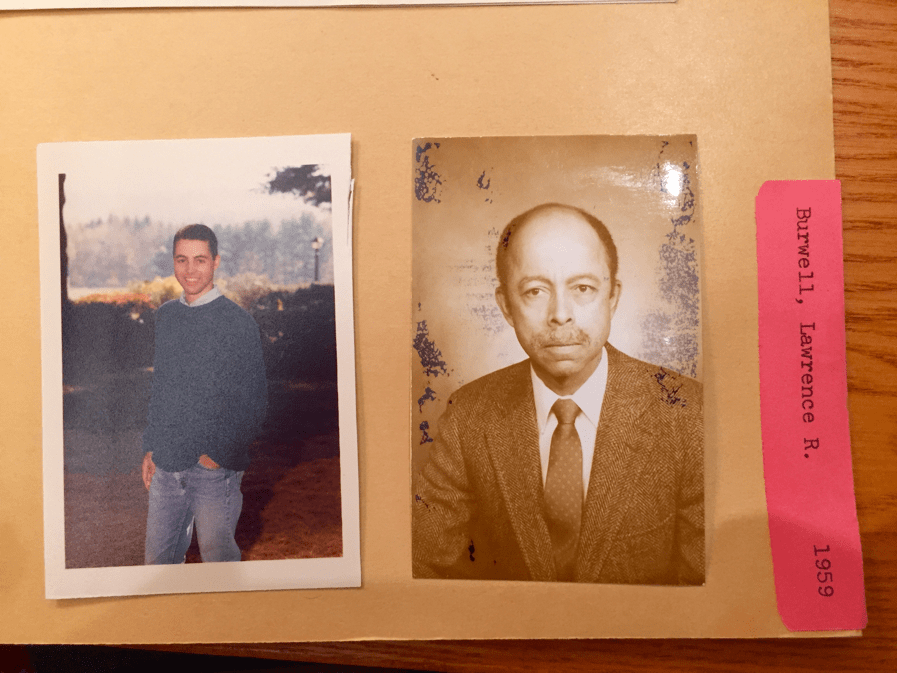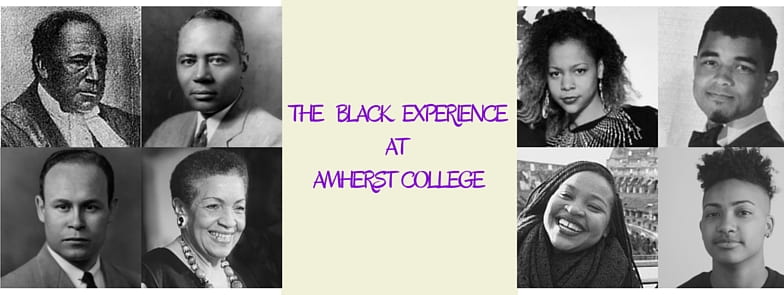02/29/16
For last week’s reflection, I wrote about my decision-making process to research the Dunbar Men of Amherst for my individual project for the special topics course. Ultimately, my personal connection to Dunbar (my grandfather was a 1943 graduate) motivated me to investigate why and how that D.C. public school transformed into a feeder school for Amherst College since the turn of the twentieth century. To keep track of new historical data, I’ve been updating a digital spreadsheet of this group of alumni with each visit to the Archives. By keeping track of class years, the spreadsheet allows me to visualize exactly how many Dunbar graduates entered Amherst every year. I color-coded those years with multiple matriculations (1925, 1926, 1929, 1956, and 1959).
However, what fascinates me about the Dunbar-Amherst connection is not simply the high rate of matriculation, but how it was maintained for generations. The cyclical trajectory of Chauncey Larry (Amherst ’27) who graduates from Dunbar in 1923 but returns to his high school as a teacher from 1945 to 1950 reflects some of the ways in which the Dunbar Men of Amherst managed to maintain an interest in Amherst College among Dunbar students. Dunbar’s seniors considered Amherst not only because of Dunbar’s encouragement for students to apply to northern colleges, but also because of Larry’s likely endorsement of his alma mater.
Last week, I continued my archival research by examining more “bio files” of those men who attended both Dunbar and Amherst. I focused on three men: Robert Stewart Jason Jr., Raymond Lewis Hayes Jr., and Lawrence Burwell. All three of these men graduated from Dunbar High School in 1955, enrolled in Amherst together, and graduated in 1959. Each of these also three men went on to pursue careers in medicine.
Were Jason, Hayes, and Burwell close friends at Dunbar? Did the decision of one to attend Amherst influence the others? Did they support each other in their college years and beyond? These are the kinds of questions I wanted to answer, but the bio files primarily served to provide biographical information about their lives at Amherst rather than their relationship to one another.
This coming week, I intend to go beyond bio files by searching D.C. newspaper records from the nineteenth and twentieth centuries for references to Dunbar and specifically connections between Dunbar and Amherst. I could also reach out to the three aforementioned men and their families to learn more about their Dunbar and Amherst experiences. I also want to learn more about what experience of Amherst students in general and black scholars in particular would have been like in 1959. Indeed, when Jason, Hayes, and Burwell attended Amherst in the late 50s, the civil rights movement was still in its early stages.
Nonetheless, one letter from the bio files suggests a connection between Burwell and Hayes that endured beyond graduation from Amherst. In January 1963, a few years after graduating from Amherst, Burwell still seemed aware of his classmate Hayes’s professional path. In a letter, Burwell updates “Bob” on “the latest news” that Hayes received his PhD in Anatomy from the University of Michigan and planned to join the faculty at Howard Medical school that fall. I didn’t capture the header in my photo so I will need to request the bio file once again to get a fuller image of the letter. I do not remember if this was a letter sent to the College or if it was Burwell’s own personal correspondence with a friend. Regardless, Burwell’s mentioning of Hayes is a good indication that the three Dunbar men of Amherst of the class of 1959 likely kept in contact with one another and supported each other’s shared medical aspirations.
A Black Amherst legacy: Below there is a photograph of Burwell ’59 (right) alongside one of his son Scott (left) who also attended Amherst as a member of the class of 1990. I want to take a look at Scott’s bio file as well this week since it might offer some more information about his father.

Below is the letter mentioned in this research reflection, written by Burwell in 1963.

